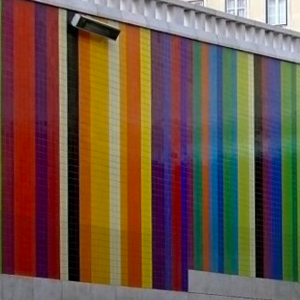Monochrome glazed plaques that are cut out and subsequently rearranged to form a design.

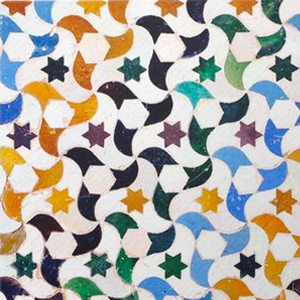
Grooves are created and then filled with a mixture of manganese and vegetable oil to ensure that the various enamels are kept separate.


Moorish motifs intertwine and repeat themselves in radial geometric arrangements to form a pattern.

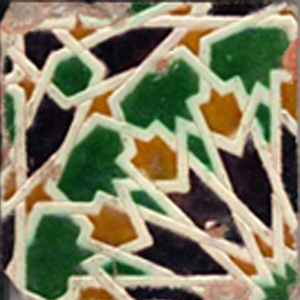
The decoration of Sintra National Palace and the dominant presence of the tile in Portugal under the influence of King Manuel I.
Moulds are used to mark motifs onto the tile body.
Moulds are used to imprint aresta designs in raw clay. The arestas that are created allow the enamels to be kept separate during the firing process.


The beginnings of tile production in Portugal.
A white base is applied to the tile, allowing it to be painted without the colours mixing.
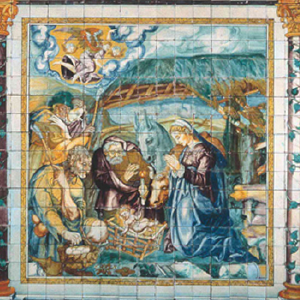
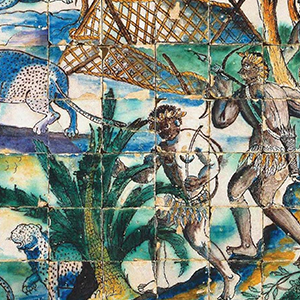
The arrival of ceramists and potters from Flanders. The definitive establishment of majolica techniques. The ceramic-making centres of Portugal are highly active.
Erudite compositions appear along with the first tiles to feature geometric compositions or plant motifs, specifically, diamond-point patterns.


The widespread creation of religious motifs painted on tile panels.


Lisbon is considered to be the nation's largest tile-production centre.
Exotic flora and fauna and depictions of eastern spirituality.
Patterned tiles including the camellia pattern, chequered tiles and emblematic and hagiographic panels.


End of the War of Restoration Construction and artistic renovation of Palaces
Tiles are used as a medium of expressing social criticism and in secular themes (classical mythology), representations of customs, albarradas (tiles depicting vases with flowers), free-standing figure tiles.
Movement, expression, drama and complexity.
Trends and Influences
Cobalt-blue and manganese-violet Dutch tiles, large Chinese influenced, blue and white panels.


Tile painting is restricted to formally trained master craftsmen.
Learning about perspective.

Sumptuosity, extroversion and theatricality in the court of João V.
Simplified storied parts, the use of decorative framings such as cut-out headpieces.

Framing becomes less important in compositions, decoration becomes less dense, asymmetric shell forms are used
Insinuation of Colour Yellow is used to suggest the gold of costumes and gilt woodwork sculpted to create a drapery effect.
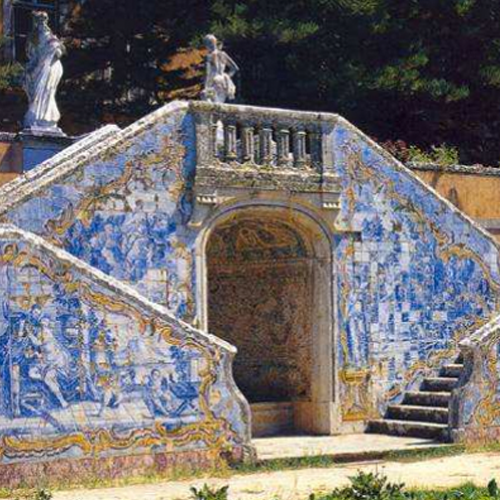
Economic crisis and the need to rebuild Lisbon.
Construction of the Fábrica do Rato, the first mass-production unit, in 1767.
Chromatic Explosion
The reprise of the complete palette of colours.
Pombaline tile-making
Storied panels (depictions of facades or ‘shrines’), ornamental compositions, increased use of patterns.

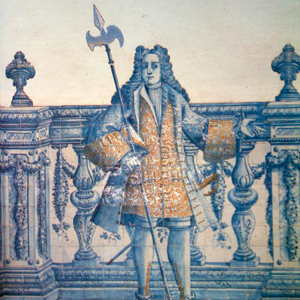
Combination of industrial and artisanal techniques Stamping, mechanical stamping, high-relief, mechanical pressing.
Neo-classicism
Severe lines and decorative refinement. The use of neo-classical elements, floral garlands, bows, feathers.

Storied panels and diverse patterns.
Tile Facades
The need for intensive tile production.
New factories are set up in Lisbon, Porto and Aveiro.
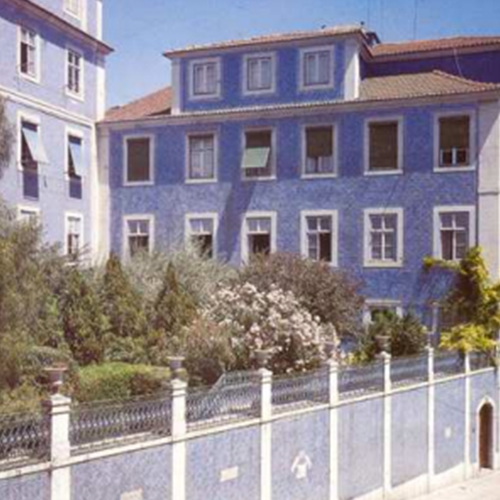
The work of Rafael Bordalo Pinheiro.
Tiled Walls
Development of the practice of covering walls with industrially
produced tiles.


The emergence of new aesthetic proposals designed to integrate the tile into modern architecture and town-planning projects.
Personalities
Jorge Barradas, Manuel Cargaleiro, Querubim Lapa, Maria Keil,
Eduardo Nery.

